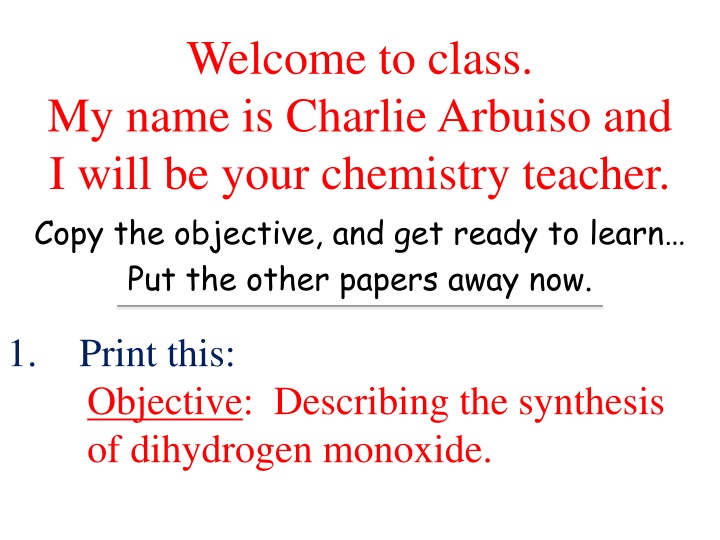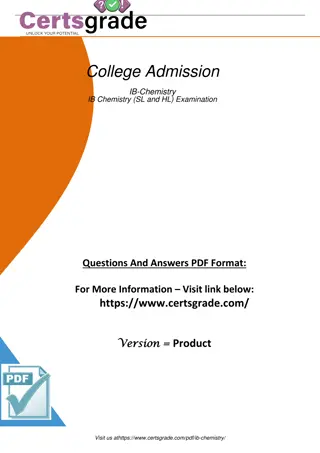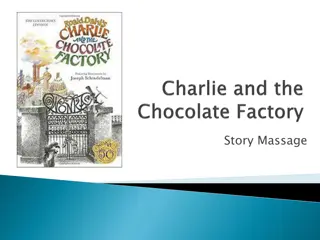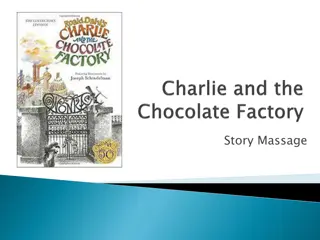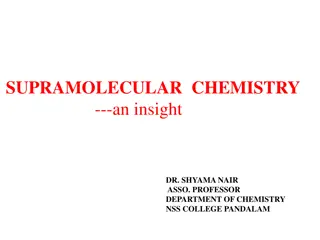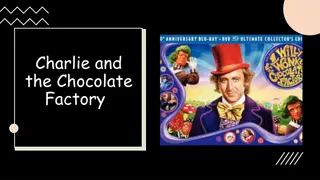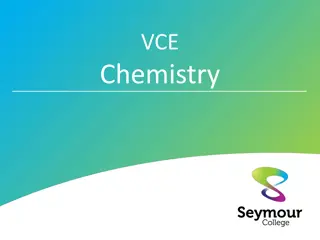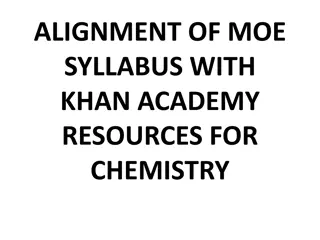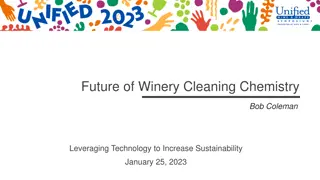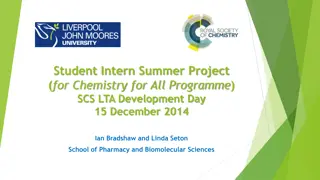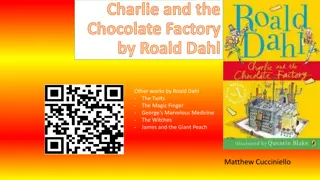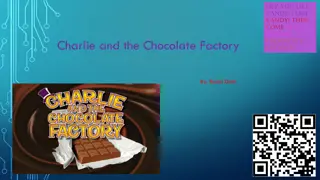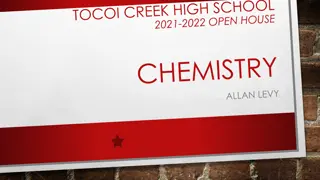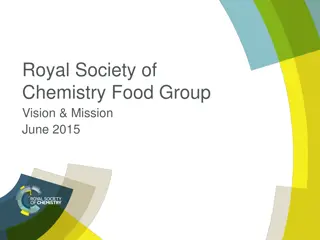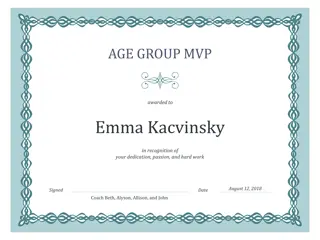Welcome to class. My name is Charlie Arbuiso and I will be your chemistry teacher.
In this lesson, we will explore the synthesis of dihydrogen monoxide, commonly known as water. Understand the chemical formula, elemental properties, and reaction process involved. Dive into the world of chemistry!
Download Presentation

Please find below an Image/Link to download the presentation.
The content on the website is provided AS IS for your information and personal use only. It may not be sold, licensed, or shared on other websites without obtaining consent from the author.If you encounter any issues during the download, it is possible that the publisher has removed the file from their server.
You are allowed to download the files provided on this website for personal or commercial use, subject to the condition that they are used lawfully. All files are the property of their respective owners.
The content on the website is provided AS IS for your information and personal use only. It may not be sold, licensed, or shared on other websites without obtaining consent from the author.
E N D
Presentation Transcript
Welcome to class. My name is Charlie Arbuiso and I will be your chemistry teacher. Copy the objective, and get ready to learn Put the other papers away now. 1. Objective: Describing the synthesis of dihydrogen monoxide. Print this:
2. What is the chemical formula for water? ___________________ 3. The H stands for the element ___________________________ which happens to be element # _____ 4. The O stands for the element __________________________ which happens to be element # _____ 5. The little 2 means that there are ___________________________ 6. There is no little 1 by the oxygen, why not?
2. What is the chemistry formula for water? H2O note the 2 is little! 3. The H stands for the element HYDROGEN which happens to be element # 1 4. The O stands for the element OXYGEN which happens to be element # 8 5. The little 2 means that there are 2 HYDROGEN ATOMS 6. There s no little 1 by the oxygen, why? THERE IS ONLY ONE OXYGEN ATOM We never write a 1 in a chemical formula, ever. It s a rule.
7. Both hydrogen and oxygen are special elements in that they do not exist as single atoms when they are pure, not bonded to other atoms. Their real formulas would be ______ and _________ because they are DIATOMIC elements, which means that they are paired together when they are pure, when they are in their elemental state.
7. Both hydrogen and oxygen are special elements in that they do not exist as single atoms when they are pure, not bonded to other atoms. Their real formulas would be H2 and O2 because they are DIATOMIC elements, which means that they are paired together when they are pure, when they are in their elemental state.
8. The skeleton formula for the synthesis reaction that combines H2 + O2 to form water is written this way: _________________________________________________ 9. The arrow means
8. The skeleton formula for the synthesis reaction that combines H2 + O2 to form water is written this way: H2 + O2 H2O 9. The arrow means REACTS or FORMS INTO THE ARROW MEANS A CHEMICAL REACTION HAPPENED, HYDROGEN AND OXYGEN CHEMICALLY FORMED INTO WATER
H2 + O2 H2O 10. It s pretty obvious that we are missing one atom of oxygen on the right side of the arrow. Are we allowed to lose matter like this? 11. There is something called the LAW OF CONSERVATION OF MATTER which is written this way:
H2 + O2 H2O 10. It s pretty obvious that we are missing one atom of oxygen on the right side of the arrow. Are we allowed to lose matter like this? 11. There is something called the LAW OF CONSERVATION OF MATTER which is written this way: Matter cannot be created or destroyed in a chemical reaction or in a physical change. (you need to memorize this)
H2 + O2 H2O 12. (Now we will talk our way though balancing this first chemical reaction. This is easy for a chemistry student, but on the first day it is tricky. If you feel confused, good for you, you re in the right class.)
12. The balanced chemical reaction 2H2 + O2 2H2O THINK: two pairs of H atoms = 4 H atoms PLUS one pair of O atoms = 2 O atoms BECOMES two waters or H2O and H2O Which is 4 H atoms and 2 O atoms
14. There are 16 different kinds of chemical reactions that you will learn this year. This type is called SYNTHESIS. SYNTHESIS means combining TWO or more ______________________ into the _____________________________
14. SYNTHESIS means combining TWO or more REACTANTS into one PRODUCT. (sometimes more than one product too)
15. In this reaction there are 2 reactants, whos names are ___________________ and _________________ 16. There is only one product, which has a science name of ___________________________________________ but we can call it ________________ too.
15. In this reaction there are 2 reactants, whos names are HYDROGEN and OXYGEN 16. There is only one product, which has a science name of DIHYDROGEN MONOXIDE but we can call it WATER too.
17. The balanced thermochemical reaction will look like this:
17. The balanced thermochemical reaction looks like this: 2H2(G) + O2(G) 2H2O(G) + energy The small G stand for GAS. The two reactants, and the one product are all in the GAS PHASE
Fireball ! Fireball !
Tonight, for Homework: A. Read the 1st Day Handout, your parents too. B. Fill in the Student Information Handout neatly. C. Get pencils, a calculator, and if you can: a loose-leaf binder to hold all your notes. Spiral notebooks are messy, and you can t hand in papers and get them back into a spiral book. D. Get psyched, we are going to learn A LOT and we re going to have fun too. I can t wait.
Measurement Class 1 OBJECTIVE: Learning about Percent Error and how to make Density Calculations.
When we measure in chemistry we need to make the best measurements we can. We will try to be 18. ACCURATE: 19. We will also try to be PRECISE:
When we measure in chemistry we need to make the best measurements we can. We will try to be 18. ACCURATE: measurements that are close to the correct, or actual value. These measure are RIGHT. 19. PRECISE: measurements that are close together, consistent. They can be accurate (yay), or they can be consistently wrong (bad).
20. Mostly well try to be BOTH accurate and precise. 21. Our measurements are called the ______________________ values. 22. The real measurements, the truth, which we usually get from science tables are called the ______________________ values.
20.Mostly well try to be BOTH accurate and precise. 21. Our measurements are called the MEASURED values. 22. The real measurements, the truth, which we usually get from science tables are called the ACTUAL values.
23. Take out a ruler and measure your notes top to bottom in centimeters. My measure is ___________ cm. 24. Measure it again to the nearest 10th of a cm now. _________________ cm. 25. The actual length is 27.9 cm. How many cm off was your measurement in cm? ______________ That boo boo is called your ERROR, which is vocabulary that we won t use ever again.
26. What we really want to use to measure how close we measured to accurate THAT is called percent error. Write the formula for percent error in the box at left. It s on the back of your reference table. Below, we'll write it out in short hand. You must know both. Don t forget the % sign after the 100!
26. What we really want to use to measure how close we measured to accurate THAT is called percent error. Write the formula for percent error in the box at left. It s on the back of your reference table. Below, we'll write it out in short hand. You must know both. Don t forget the % sign after the 100! Measured value actual value actual value or % ERROR = X 100% %E = MV AV X 100% AV
27. Lets calculate your percent error on this measurement. If you happened to get 27.9 cm exactly, good for you. You should use 28.3 cm as your measured value instead. Write the formula again, shorthand style.
27. Lets calculate your percent error on this measurement. If you happened to get 27.9 cm exactly, good for you. You should use 28.3 cm as your measured value instead. %E = MV AV X 100% AV %E = 28.3 cm 27.9 cm 27.9 cm X 100% = %E = +1.43% It must have a + sign
28. Lets use your eyes to measure the weight of Mr. Arbuiso in POUNDS. His mass is _____________ pounds. According to the LOUSY school scale, the actual value for his weight is __________ pounds. 29. Calculate your percent error, write the formula in shorthand first.
28. Lets use your eyes to measure the mass of the teacher in POUNDS. My measure his mass to be _____________ pounds. According to the LOUSY school scale, the actual value is __________ pounds. 29. Calculate your percent error, write the formula in shorthand first. %E = MV AV X 100% AV
27. If your %E is positive, that means your measured value 28. If your %E is negative, that means your measured value 29. If you have no sign, positive or negative, that means 30. Percent error ALWAYS gets a sign, or else
27. If your %E is positive, that means your measured value is bigger than the actual value. 28. If your %E is negative, that means your measured value is smaller than the actual value. 29. If you have no sign, positive or negative, that means you re not paying enough attention and it s just WRONG. 30. Percent error ALWAYS gets a sign, or else you will turn into a frog and hope for a prince or princess to save you, which won t happen, and you ll be a frog forever. That stinks.
34. You measure the density of Cu to be 8.75 g/cm3. What element is this, and what is the actual density of this element (and how did you figure that out?) 35. Write the percent error formula in shorthand, calculate your percent error carefully. Get a SIGN too!
34. You measure the density of Cu to be 8.75 g/cm3. What element is this, what is the actual density of this element (and how did you figure that out?) It s 8.96 g/cm3 or 8.96 g/mL which is the same thing, and I looked at Table S. Everyone knows that 1 cm3 = 1 mL and that mL3 is really dopey! 35. Write the percent error formula in shorthand, calculate your percent error carefully. Get a SIGN too! %E = MV AV X 100% AV %E = 8.75 8.96 X 100% 8.96 NOTE: units are important, but for space I omitted them in the math, and they will all cancel out anyway. ALSO, note the negative sign, which HAS to be there or else ribbit! %E = -2.34%
36. Is your measured value in this problem more than or less than the actual value? ____________ Does your percent error sign make sense? _________________
37. The formula for Density is on the back of the reference table. Copy it now, then in short hand.
37. The formula for Density is on the back of the reference table. Copy it now, then in short hand. mass volume Density = D =m V
38. A bar of metal is 27.73 g and has volume of 4.70 cm3. Is it gold? (start with a formula, look at table S)
38. A bar of metal is 27.73 g and has volume of 4.70 cm3. Is it gold? (start with a formula, look at table S) = D =m V D = 5.90 g/cm3 Is that the density of gold? 39. What element might it be instead? 27.73 g 4.70 cm3
40. You measure a hunk of aluminum to be 363 grams and have volume of 148 mL. What is your measured density? What is your percent error?
40. You measure a hunk of aluminum to be 363 grams and have volume of 148 mL. What is your measured density? What is your percent error? = D =m V D = 2.45 g/mL which is also 2.45 g/cm3 363 g 148 mL %E = MV AV X 100% AV %E = 2.45 2.70 X 100% = -9.26% *the negative sign! 2.70
Measurement Class #2 Temperature Conversions, Centigrade Kelvin (and NOT Fahrenheit, we try not to say the F-word in chemistry)
41. Centigrade is another way to say Celsius, but centi- reminds us of cents, and there are __________ units of temperature from melting ice to boiling water temperature. It s a Metric Temperature Scale. (good) 42. Another temperature scale is called the _______________ scale. It s named after a guy named Lord ______________________, no relation to Lord Vader, from Star Wars. 43. In Kelvin, there are 100 units of temperature from melting water to boiling water temperature. It s a Metric Temperature Scale too. This scale DOES NOT USE degrees, just _________________
41. Centigrade is another way to say Celsius, but centi- reminds us of cents, and there are 100 units of temperature from melting ice to boiling water temperature. It s a Metric Temperature Scale. (good) 42. Another scientific temperature scale is called the KELVIN scale. It s named after a guy named Lord KELVIN, no relation to Lord Vader from Star Wars. 43. There are 100 units of temperature from melting water to boiling water temperature. It s a Metric Temperature Scale too. This scale DOES NOT USE degrees, just KELVINS
44. Water boils Water freezes ?
44. Temperature We will not use Fahrenheit temperature in science class. We will use Centigrade AKA Celsius As well as KELVIN F C K 212 F 100 C 373K Water boils 32 F 0 C 273K Water freezes -273 C Absolute Zero O K
45. Pros and Cons of each temperature scale. Pros Cons 186 units between melting ice + boiling water, less estimation. non metric (wacky numbers) Fahrenheit no scientists can use it, it won t work in the formulas at all. Almost everyone in the US knows this when it gets chilly in Vestal, you can get negative numbers which make the math go nuts. You can also have a zero temperature measurement at a relatively normal day. 100 units between melting ice + boiling water, totally metric. Centigrade or Celsius Almost everyone in the world but the US and England knows this Zeros will ruin the math calculations normal people have no idea. 100 units between melting ice + boiling water, totally metric. the numbers make normal people feel less smart than they really are. Almost every scientist knows about it and it always works. Kelvin there s a conversion formula we need to learn because our thermometers are centigrade, but lots of our math is in Kelvin. It s the absolute temperature scale
